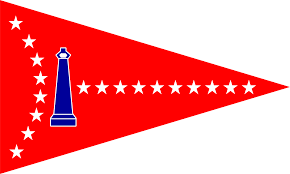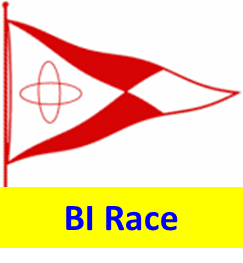Hi Everyone,
We had another successful night of racing last Tuesday and led the rest of the 109’s until the last upwind leg. We are having fun and steadily improving. Thus, we discussed stepping up our game a bit now that we have had some successes. To which we would like to work on crew weight placement first. We have been slack on this and I am as guilty as everyone else. For the next Tuesday, lets really try to stay on the rail as long as possible before tacks / gybes. Below is more info from a guide I copied below from Sailing World.
TIMING SEQUENCE
A Tack or Gybe will now be in the following sequence:
- Tactician to Helm: “I would like to tack/gybe when you are ready [or on the next puff/ header..etc]”
- Helm and main look for favorable and safe place to tack/gybe.
- Helm then says: “Prepare to Tack/Gybe!”
- ON TACKS: Only the jib-fine trimmer moves to release position.
- ON GYBE: Bow grabs lazy sheet but keeps movement to minimum. Only the Pit/Grinder moves in preparation of becoming active spin trimmer.
- Once the fine trimmer is near the leeward winch or Pit/Grinder says “ready.
- Helm: “Tacking in 3-2-1” and then tacks.
- The rest of the crew now moves (only when the helm says “Tacking/Gybing…”)
- The tack or gybe may be cancelled if something is wrong but we must be better prepared (pre-set and lines always cleaned up) to minimize delays.
The crew will now have only 3-4 seconds to turn off the rail and start moving. This should be more than enough time for the gross trimmer to turn and grab the lazy sheet as he/she crosses and for the rest to cross. In light winds, the crew should roll the boat by leaning in and then out before crossing in a synchronized movement. In heavy winds, everyone should just quickly move over in an organized manner. Once we get good, the other teams should have a hard time to detect our intent to tack/ gybe. Talk to each other each night and please plan out your movements (who goes where) before the first tack.
WEIGHT PLACEMENT
[stolen from Sailing World and edited for us] Common sense dictates that when the boat is heeled over it is time to put crew weight on the rail or have your guest move to the high side, but there is more to positioning your crew weight than just hanging legs over the side. Keep in mind that the heel angle influences the boat’s balance – heeling to leeward makes the boat want to head up while windward heel will have the opposite effect (especially valuable when trying to point upwind or sail deep angles downwind).
- Upwind
- light conditions, j109’s perform best with a slight angle of heel (10-13 degrees) so consider having people leeward and as close to the shroud base as possible. In extremely light air we will want to consider the “dogs in the house” approach (crewmembers below and if possible, to leeward, to lower the center of gravity) to keep the boat moving.
- As the breeze increases, weight is moved from the leeward side to windward, always keeping the weight as close together by the shrouds (on top of keel) as possible and checking the fore/aft trim of the boat by keeping an eye on the bow wave;
- Heavy wind. if the bow is digging in (driver should also feel this), move a body aft until the knuckle of the bow comes up.
- Downwind
- Light, keep the people placed forward and as close to the shrouds as possible without having anyone forward of the mast. In very light wind, keep the boat flat or slightly heeled to leeward if necessary to give shape to the sails. This will not only get the stern out of the water a bit but also give the helmsperson some feedback on the rudder as the boat will want to turn to windward with induced leeward heel.
- Once the breeze starts to rise, weight is moved aft and to windward to keep the boat flat or even heeled to windward to take advantage of the boat’s inherent form-stability. Heeling to windward makes the boat want to head down while also projecting the kite into cleaner air.
- Once the wind is blowing hard it will become necessary to stack as many people aft as possible to keep the bow up and to induce surfing or planing if the conditions allow.
- Extra items:
- No extra crew in the pit/ cockpit after starting sequence. Try to keep it to only main and helm as much as possible for upwind and downwind;
- No sitting on cabin top. It disturbs airflow in slot/ off jib. Either on windward rail or leeward if needed, no more in between even when going downwind;
- Minimize lazy hiking or leaning in when healed. Unless you think your feet are close to hitting the water (low heel), we need body weight out over rail. Only when we are nearly flat and don’t quite need leeward weight should folks lean in.
- Get close and chummy to who ever is in front of you on the rail. Huddle near shrouds
- After rounding the downwind mark and dropping the Spin, get on the rail as soon as humanly possible. This means delaying cleaning up (absent a tactical reason for quick tack). Let’s build speed and then one person down from the rail to clean.
Police each other, but no being mean. Stay nice to each. Make a joke of it or create code words.
Let us keep having fun while we try to squeeze out the speed or better pointing. Remember, it is better to lose a race than a friend.
Finally, here is another article on the art of tacking: https://www.quantumsails.com/en/resources-and-expertise/articles/in-search-of-perfect-tacks
It reinforces some of these concepts and addresses items of current interest for us.





Recent Comments
test from Marquise